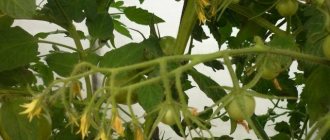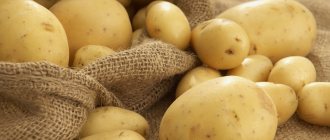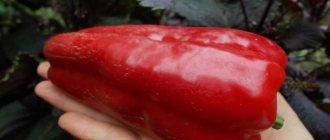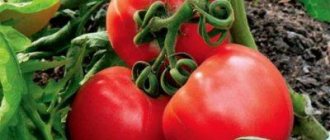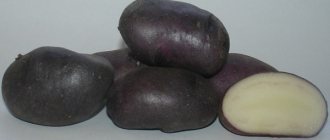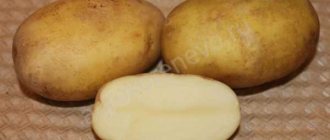The Corrado hybrid onion is suitable for amateur gardeners and entrepreneurs. It is usually grown in a biennial culture. It has a mildly spicy taste, very pleasant and piquant. The bulbs are of high quality, store well and ripen well. The hybrid is also good for health and has universal use.
| Maturation | Type | Color | Life form | Taste |
| Average | Bulb | Golden | perennial | Mild-sharp |
Features of the Corrado variety
Onions of this variety are a modern hybrid plant that can be grown in different regions of the Russian Federation. The variety is sometimes mistakenly called Korady. However, its name is actually pronounced Corrado.
Description, origin and development
The plant is a new hybrid, which was bred by the Dutch company NICKERSON ZWAAN BV. The culture was included in the State Register of Russia in 2015.
Onions of this variety have excellent yield
The plant can be planted in 6 regions - in the Central Black Earth, the North Caucasus and the Far East. It can also be planted in Western and Eastern Siberia and the Lower Volga region.
For reference! The hybrid is considered early ripening - some experts claim that the harvest can be harvested 95–98 days after emergence.
Onion sets Corrado F 1 should be planted as a two-year crop: the seeds are planted in the first year, and then the sets.
Characteristics of onions and yield
The bulbs of this variety have a rounded-flat shape. It is covered with a dense husk of a golden hue. The peel covers the internal scales well, which increases the shelf life of the onion and its commercial characteristics.
The leaves are hollow and have a two-row arrangement. Each subsequent leaf appears from the bosom of the previous one. The length of the feathers reaches 30 cm. They have a bluish-green tint.
The description of the Corrado onion variety says that if the plant is planted with seeds, it produces a long arrow measuring 1.5 m. An inflorescence forms at its end. After flowering is completed, black seeds appear in the boxes.
Onions are characterized by high yield parameters. From 1 square meter you can get approximately 8 kg of vegetables. When planting winter onions, it is possible to harvest 350 kg from one hundred square meters.
With proper care, onions are characterized by high yields.
Soil features
Onions of the Corrado variety take root well on all types of soil. However, the most favorable environment for growing this crop is considered to be loose, drained, loamy soil that has a neutral pH level. If there is an urgent need to reduce the acidity of the soil, then this manipulation should be carried out no later than 2 years before sowing the crop using lime. Humus should also be added 1.5–2 years before planting onions.
Read also: Green onions on the windowsill at home: how to grow, how to plant on greens, in water
The most successful option is if the “predecessors” of this species at a particular planting site were early varieties of cabbage, potatoes, and zucchini. After another variety of onion, Corrado should be planted in the same place only after 3 years. Experienced gardeners advise planting this crop next to carrots - such a symbiosis will prevent the appearance of harmful insects. It is highly undesirable to plant Corrado onions after legumes.
Landing dates
Onions can be planted at different times - it all depends on the region where the crop is grown. In the south and center this can be done in October or November, when the temperature is +5 degrees. In the northern regions, planting work is carried out in the spring. Planting Corrado onions should be done at a temperature of +10..+12 degrees.
Important! The crop can be grown in open ground. A greenhouse is only suitable if you need to harvest greens from spring to autumn.
Advantages and disadvantages
The hybrid variety Corrado has many advantages. But before you plant it, you need to study the disadvantages and evaluate the advantages.
The main advantage of the Corrado variety is resistance to crop diseases
Advantages:
- high productivity;
- suitable for growing greens;
- long-term storage;
- rarely suffers from diseases and pests;
- can be transported over long distances.
Flaws:
- instability to cold weather, therefore it is recommended to grow in the southern regions or in central Russia;
- with heavy watering or excessive rainfall, the bulbs may rot;
- inability to obtain planting material from seeds collected from the site;
- high cost of seedlings.
Seed planting process
It is quite possible to propagate onions by seed. In this case, you need to properly prepare the planting material.
Seed preparation
After purchase, it is important to immediately evaluate the germination of seed material. In this case, proceed as follows:
- Take 10-15 grains and place them in a container for seedlings. Place gauze on the bottom.
- Lightly moisten the seeds with water.
- Place the container in a warm place for 7-10 days.
- Count the number of hatched seeds. Their number should be at least 50%.
High-quality planting material should be prepared as follows:
- Take warm water into a small container - its temperature should be 50 degrees.
- Place the seeds in a container for half an hour.
- Keep the heated grains under running water for 2-3 minutes.
- If necessary, soak the planting material for a day in a solution of potassium permanganate and place it in Ecopin for 3 hours.
- Wrap the seeds in a damp cloth and place in a warm place.
- Check the sprouts every day.
- When 3-5% of the seeds hatch, they can be planted in the ground.
Growing sets
Preparation
- Planting material must be inspected and healthy bulbs without visible signs of mechanical damage or disease must be selected. There should be no feathers or sprouted roots!
- Corrado F1 sets do not need to be soaked or germinated. This can lead to crop loss.
- Planting material must be dried either in the sun or on a radiator for 2 weeks at a temperature of 20°C. Then the temperature must be increased to 40°C and the bulbs must be kept in such conditions for 8 hours.
- In addition to drying, the sets need to be pickled (do this immediately before planting). To do this, the onions are placed for 2 hours in a solution of copper sulfate (30 g per 10 liters of water). Then the seeds are washed with water.
Landing
- When planting in winter, the following scheme is used: 5-10 cm between rows of seedlings and 20 cm from other plants. Depth: 4-6 cm above the root collars. To ensure that the bulbs can survive the winter, a thick layer of peat or fertile soil is placed on top of the furrows. Mulching is mandatory.
- For spring planting, the same scheme is used: from 5 to 10 cm between rows of sets and about 20 cm from other plants. The only difference: the depth should be 2-3 cm.
How to make your own seedlings
Seedlings can be planted in boxes or cups. Their depth should not exceed 6-9 cm. There must be drainage holes at the bottom. Ready-made substrate should be used as primer.
Important! You can make the soil yourself. To do this, you need to mix leaf soil, turf, humus and sand in a ratio of 1:1:1.5:0.5.
It is worth filling the container for seedlings with the prepared substrate. Seeds need to be planted 50-60 days before moving into open ground. To do this, using tweezers, each seed must be carefully placed in small furrows, keeping a distance of 1.5 cm. Sprinkle the holes with earth on top and cover with film.
Transplanting seedlings into the ground
You need to plant seedlings in a permanent place when 3-4 leaves appear. This should be done if the threat of frost has passed. The procedure is carried out in the afternoon. The soil with seedlings should be moistened, each plant should be pulled out and the long roots should be trimmed by a third.
Planting must be carried out in accordance with a certain scheme. The width between the holes is 5 cm, the distance between the rows is 30 cm. Seeds need to be planted at a depth of 1 cm. After planting, water the bed thoroughly and cover it with a mulch layer.
Methods for planting Corrado onions
A high harvest can only be achieved from high-quality material. To get Corrado onion turnips in the Southern regions and the Central zone in one season, you can use winter or early spring sowing, as well as seedlings.
In colder regions, sets are first obtained from seeds. Only for the next season they collect turnips.
Growing from seeds
Seeds are sown at the end of April in open ground (in regions with warm climates). They are pre-soaked in warm water or in a growth stimulator for 1-2 days.
The most commonly used method is the tape planting method. The distance between the tapes is 20 cm. The planting depth is 1-2 cm. After the emergence of seedlings, the beds are thinned out, maintaining an interval of 2 cm between adjacent specimens. When the onion has three true leaves, the procedure is repeated. There should be a distance of 6 cm between neighboring plants.
If seeds are planted before winter, then the best period is late October - early November. In this case, the seeding rate is increased three times. Plantings must be mulched with a thick layer of peat. This method is good because shoots appear much earlier, so the bulbs ripen faster.
To obtain seedlings, Corrado seeds are sown in containers in a heated room in early March
Seedlings are transferred to open ground after 50-60 days. By this time, the seedlings should have 3-4 true leaves. The transplant is carried out on a cloudy day. A distance of 25 cm is maintained between rows, and 6-8 cm between adjacent shoots.
Planting seedlings in open ground
Corrado sets are planted in open ground after the threat of frost has passed. Shallow furrows are formed in the garden bed. There should be at least 20 cm between them. Water the soil thoroughly and add wood ash mixed with sand.
The sets are buried in the ground and sprinkled so that there is a 2 cm layer on top.
When planted shallowly, Corrado onions sprout early, but in this case it will not be possible to grow a large turnip
Leave 6-8 cm between adjacent bulbs. This distance is necessary for the full formation of the turnip. Some gardeners use snake planting in small beds. In this case, the Corrado set is placed more densely. This type of cultivation requires thinning. When shoots appear, every second bulb is pulled out from the garden bed along with the feather. This method allows you to collect greens and grow large turnips.
Aftercare
In order for onions to grow normally and produce a bountiful harvest, they must be properly cared for. To do this, the beds with Corrado onions should be watered on time, weeds should be removed and the rows should be loosened.
Onions need timely watering
It is worth moistening the soil at intervals of 1-2 times a week. However, the frequency may vary depending on the region and climate. In hot weather and in the absence of precipitation, the amount of watering is increased. 2-3 weeks before harvesting, watering should be completely avoided.
Fertilizers should be applied 3 times during the season.
- For the first time, it is worth adding nitrogen agents. They promote green growth. This feeding is carried out 2 weeks after the sprouts appear.
- In another month you need to feed the plantings with nitrophoska. The drugs Agroshkola and Kristalin are also used.
- The third feeding is carried out at the stage of bulb formation. At this stage it is worth using superphosphate, potassium sulfate, and ash.
Harvest and storage
The specific time for onion ripening depends on the weather and climate.
How and when to collect
When planting in winter, the harvest is obtained in late July - early August. When sowing in spring, the dates are shifted by a month.
The maturity of the bulbs is determined by the yellowed tops. Collected in dry sunny weather.
For ripening, the onions are left in the garden for 2-3 weeks, then carefully removed from the soil, shaking off excess soil. Transfer to a dry room to dry. Feathers and roots are cut off from turnips, and bad and damaged specimens are removed.
Storage features and shelf life of the hybrid
For long-term storage, vegetables are placed in a cool place. A cellar or basement works well. The temperature there is maintained within 0...+3°C, humidity - 85%. At home, the indicators are different: temperature - +18...+ 22°C, humidity - 70%.
Vegetables are placed in a cardboard or wooden box, wicker basket, or hung from the ceiling.
If all conditions are met, onions will not spoil until spring.
